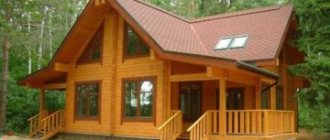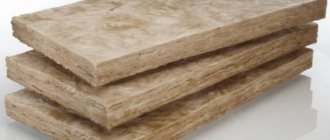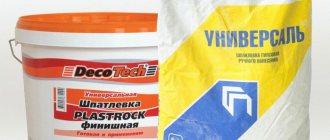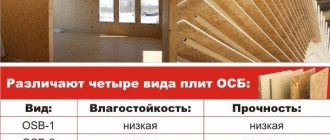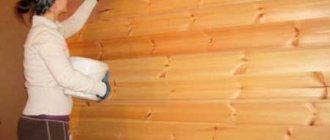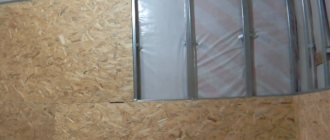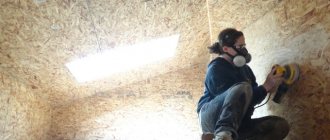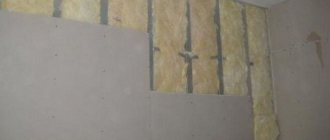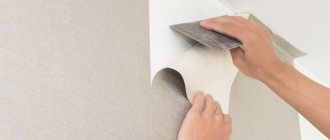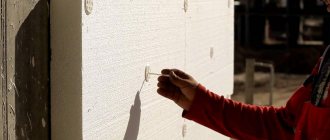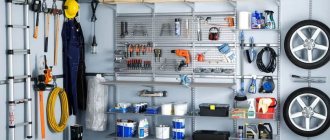The demand for environmentally friendly materials is gaining momentum. Every sane person understands the importance of using healthy building materials, such as wood, in their home.
However, this is an expensive pleasure that many cannot afford. What to do in this case? The problem can be solved using a cheaper analogue - plywood. In terms of its properties, it is almost as safe, and its texture is sometimes indistinguishable from natural wood; moreover, it is easy to install and lasts a long time. Owners of private houses, country cottages and summer cottages successfully use plywood for their needs. Owners of city apartments also do not avoid getting to know her.
Eco-friendly, stylish and inexpensive
Dividing plywood by type of wood
The properties of the material greatly depend on the type of wood, but for plywood only the veneer composition of the outer layers of the sheet is taken into account.
Based on the type of wood, plywood is divided into 3 categories:
- Birch. 90% consists of birch shavings and sawdust. It has a pleasant light shade with a uniform soft texture and high tensile strength.
- Coniferous. Consists of coniferous wood. It is characterized by increased resistance to moisture and insects due to the resins in the fiber structure, while the resin is often found in the texture in the form of noticeable resin pockets.
- Combined. It consists of wood of different species, partly made from especially valuable wood species. It is characterized by increased strength, but due to the technological complexity of production and the partial content of valuable species in the composition, it has a high price.
Sheathing options
The clean, warm texture fills the room with a special aroma, which is especially appreciated by fans of eco-style in the interior of a dacha. When calculating the finish, experts take into account the expansion and reduction of wood volumes following changes in humidity - the “game” of dimensions in logs is more significant than in beams and boards.
A frame for covering walls and ceilings is not required. The raw materials are impregnated with protective compounds; subsequently, this layer will need to be renewed regularly. The main disadvantage of the material is its high cost, but this is offset by the beauty of the design and the environmental friendliness of the solution.
An excellent video example of the decoration and interior of a spacious country house made of northern pine
Lining
Natural and aesthetic material - a godsend for framing a country home
- their pleasant aesthetic appearance, allowing you to imitate a variety of textures;
- affordable price;
- high thermal insulation performance;
- ease of installation, which can be handled even without much experience in repair work;
- environmental friendliness of the material.
Interior decoration of a country house with clapboard is a great idea for those who value comfort and coziness above all else. By experimenting with textures and shades, owners have the chance to create a memorable interior without spending a fortune.
The lining will decorate not only the rooms, but also the facade of the house
What should you consider during the installation process?
- High-quality finishing is possible only when using wooden sheathing as a base.
- If you want to insulate the walls of your house, you can put mineral wool, glass wool or expanded polystyrene into the frame.
- Wooden slats for the base should be secured either with nails or self-tapping screws.
Without a frame, installation of lining panels will be incomplete
I also want to note that lining can be a very inexpensive and practical answer to the question of how to decorate a change house into a country house.
Change houses finished with clapboard
Drywall
Drywall is not much inferior to lining in popularity. This is a universal material used both for leveling walls or arranging interior partitions, and for decorating window slopes.
Drywall is universal, it can be used for cladding almost any surface
Instructions for installing drywall are as follows:
- The first step is to create a frame from metal or wooden slats. They are fixed to the wall with screws or self-tapping screws at a distance of 40-50 cm from each other.
Lathing for installing gypsum boards on the ceiling
- Afterwards, plasterboard slabs are attached to the frame. The joints between the sheets are sealed with putty and then primed.
Brief instructions for puttying gypsum board joints
- After about 6-8 hours (this is exactly how long it will take for the primer to dry), you can proceed to pasting or painting the walls.
Now you can decorate the room
Plywood
Even plywood can look very interesting
In addition to such impressive advantages, I would like to add easy installation with your own hands, which can be handled by people who have never done repairs before. As a finishing touch, the plywood can either be painted with bright paint or covered with wallpaper.
Plywood trim? Why not!
Classification of plywood by grade
The grade of plywood refers to the overall quality of the wood, the degree of its processing and the presence of visual defects.
Plywood is generally divided into 5 grades:
- Grade E. Selected plywood with a perfectly smooth surface and without visual defects. Only minimal deviations from the original structure of the wood itself are allowed.
- Grade 1. High-quality plywood with minor defects (warping and cracks).
- Grade 2. Medium quality plywood with permissible cracks up to 200 mm and glue protrusion of no more than 2% of the total surface area.
- Grade 3. Rejected plywood of average quality, which may contain small wormholes and cracks up to 300 mm long.
- Grade 4. Low quality plywood with a large number of acceptable visual and structural defects.
By the way! You can often see the markings “4/4” or “3/4”, this is how the sides correspond to a certain grade: the first number is the grade of the front layer, the second number characterizes the back layer. It is beneficial to use such plywood for interior decoration.
Original interior walls made of plywood in a country house
Although plywood is not used so often in the finishing and construction of interior structures, it is a fairly practical, stylish and convenient solution. It is especially relevant in a wooden country house. Here, interior plywood walls are suitable for decorating a space like nothing else. If sheets of plasterboard or aerated concrete still need to be finished on top, then structures made from sheets of plywood look impressive and aesthetically pleasing without additional finishing.
This surface is safe, environmentally friendly, pleasant to the touch, and improves the thermal insulation and soundproof qualities of rooms. The sheets are quite simple to install and you can create structures of any shapes and configurations from them. What exactly did the presented house with plywood finishing get, we will consider further.
Separation of plywood according to surface treatment method
A number of manufacturers, in addition to the grade, additionally indicate the method of processing the surface layer when marking plywood. Plywood is divided into 4 categories based on surface type:
- Laminated. The sheet is covered with a special film for additional protection and increased strength.
- Ш2. Plywood, sanded on both sides.
- Ш1. Plywood, sanded on one side.
- NS. Plywood that has not been sanded.
Headlining
Finishing the ceiling with plasterboard with your own hands is a simple and at the same time unique way to transform the surface. It has a lot of advantages, which makes it stand out from other methods. Because of its low cost, it is often used in rented or rented apartments, which is convenient for young families. The advantages of such finishing include the low cost of materials - their cost is much lower than that of isoplaat panels, but externally they are indistinguishable.
You need to fasten the plywood with self-tapping screws, which can be done even by one person. The ceiling can be sheathed with matte plywood, as well as varnished, which will visually increase the area of the room. Wood cladding is suitable for a wooden ceiling, which will preserve the environmental friendliness of the room and recreate a favorable climate, while creating a unique design.
You can also cover the ceiling with plywood, various lumber from oak, maple, ash, and cherry. Of the coniferous species, larches and fir are ideal
When choosing a material, it is important to take into account humidity - it should not exceed 16%. In those places where lighting fixtures or communications for household appliances will be located, it is necessary to strengthen the frame as much as possible, reducing the pitch of the guides
Covering the ceiling with imitation timber is a newfangled trend, driven by the trend to use only isoplaat in repairs. To artificially recreate timber, different materials are used - plastic, painted “like wood”, as well as plywood.
Additional information on the topic:
- Curved plasterboard ceilings complete assembly instructions
- At what distance should I attach the drywall profile to the wall?
- What to do about an uneven plasterboard ceiling
- How to visually make the ceiling higher with plasterboard
- How to repair a hole in a drywall ceiling caused by light fixtures
Classification of plywood by adhesive composition
The composition of the glue greatly affects the characteristics of the plywood sheet, so plywood is also distinguished on this basis:
- FSF. Plywood based on phenoformaldehyde glue. It is characterized by increased moisture resistance and strength. The resin composition includes harmful substances, which is why FSF is not recommended for use in finishing residential premises and making furniture.
- FKM. Plywood based on melamine glue. Average level of moisture protection and concentration of harmful substances in the adhesive. A universal type of plywood that can be used where there are no special requirements for moisture resistance and toxicity levels.
- FC. Plywood based on urea glue. The composition of the glue is absolutely harmless to humans, but does not provide the wood with high moisture resistance. An ideal plywood option for interior decoration.
- FBA. Plywood based on albumin casein glue. Environmentally friendly composition with the worst moisture resistance indicators. FBA plywood is only suitable for work in dry rooms.
- FB. Plywood based on bakelisite glue. An expensive and versatile option with a high level of moisture resistance and strength. Bakelite plywood is further divided into 2 categories: FBS. Contains alcohol-soluble glue, which provides better moisture resistance of plywood.
- FBV. It contains water-soluble glue, which further strengthens the structure of the sheet and ensures high strength of the plywood.
By the way! Plywood markings may vary depending on the method of processing the layers with glue. For example, in FBV-1, the veneer layers are not impregnated with the composition, but are only coated. And in “FBS-1A” only the longitudinal layers are treated with glue. Therefore, if you see such markings, you should know that the quality of such plywood will be slightly lower.
What tools might you need?
For successful and comfortable work, you need to stock up on a variety of devices and tools in advance. You may need:
- A drill (preferably with the ability to hammer drill - the so-called hammer drill - for working on concrete) and a set of drills (for concrete and wood; with different diameters);
- Screwdriver;
- Construction gun and staples for it.
- Jigsaw and/or hacksaw. Ideally, it would be nice to have both an electric and a manual jigsaw or hacksaw - in such work they are not always interchangeable;
- Don’t forget to also choose a set of files of different thicknesses and spare ones for your jigsaw (they periodically become dull and sometimes break);
- A sanding machine and fine-grained sandpaper for it - useful for final sanding;
- Hand files of various grain sizes will also help to polish the cuts and give them shape;
- a plumb line and level (water, bubble or laser - of your choice) - will be useful both when cutting plywood and when marking frame structures;
- wide flat and notched spatulas - for applying glue (for the adhesive method of attaching plywood).
- narrow spatula - for sealing seams;
To prepare parts and assemble you may also need:
- construction pencil
- hammer or mallet,
- screwdriver set,
- pliers,
- awl, etc.
Dimensions and thickness of plywood
The dimensions and thickness of plywood are regulated by GOST 3916.2-96 (for coniferous panels) and GOST 3916.1-96 (for hardwood grades). At the same time, the standard sheet width is 1220 mm; plywood 1525 mm wide is also often used. The length of plywood varies from 1525 mm to 2500 mm. Standard sheet size: 2440x1220 mm, and the most popular size: 1525x1525 mm.
The thickness of plywood depends on the raw material and the number of veneer layers (from 3 to 21) and ranges from 3-30 mm.
Frame assembly
To install the frame you will need plywood, wooden beams (galvanized profile), direct hangers, fasteners: screws, dowels. Also some tools: a hammer, a screwdriver, a jigsaw (circular saw), a tape measure, a building level and a corner.
- At the first stage, the walls are marked. Using a building level, mark vertical guides in increments of about 60-80cm - the increment depends on the size of the sheet, which must be connected horizontally to at least three points, one must be strictly in the middle. Horizontal markings are also made under the ceiling and near the floor.
- Screw vertical plumbs onto the wall in increments of 50-70cm, onto which the frame elements will be attached.
- The frame begins to be assembled with horizontal guides, after which they move on to installing vertical ones. The distance between the wall and the front side of the profile is set taking into account the goals (presence of noise and heat insulation).
Vertical posts are placed along the edges of the wall and twine is pulled between them. With its help, all other guides are set. This simple technique will help you avoid unevenness.
- After the frame is ready, it is treated with an antiseptic composition, after which it is ready for hanging sheets.
Frame for a rough plywood base
Methods of using plywood
Different classifications and characteristics of plywood open up many possibilities for the use of plywood in a particular industry.
Marine/Marine Plywood
For finishing yachts, boats and during construction work, where special strength and the ability to withstand prolonged exposure to moisture are required. For these purposes, mainly birch FB plywood is used.
Furniture plywood
For the production of furniture, preference is given to birch FC plywood, since it is harmless to the human body. Our blog has an article about making a kitchen out of plywood with your own hands.
Construction plywood
For construction work, low-grade plywood is mainly used, since it is used in large quantities for rough installation, where appearance is not so important.
Aviation plywood
A special type of ultra-strong FSF plywood for aircraft construction, professional modeling, and the production of musical instruments.
Plywood for formwork
Formwork can be made from any plywood, but only thick sheets of laminated FB plywood are suitable for reusable use.
Decorative plywood
Selected high-grade FC plywood, from which only perfect appearance and smooth surface are required. It is used for interior decoration, upholstery of car interiors and furniture production.
Transport plywood
Laminated plywood with ribbed and mesh coating is used in the automotive industry. The use of such plywood when covering the metal frames of vans and in interior trim helps to significantly reduce the weight of the vehicle, and also simplifies and reduces the cost of repairs.
Rules for installing plywood sheets
To sheathe walls with plywood, both frame and frameless structures can be used.
Frameless is used when finishing walls in an apartment or other room with flat walls - this method is simple, installation is quick: the slabs can be glued to a flat wall surface, it is recommended to glue the joints together. This method is good because it allows you to mount the finishing surface without additional modifications.
Finish wall cladding
A frame structure will require more time, but this is necessary for uneven walls, as well as when laying insulation or sound insulation is required. For the frame, wooden blocks or galvanized plasterboard profiles are used.
Decorating the walls in an apartment begins with electrical installation work; cables and wires are supplied to distribution boxes, panels, sockets, etc.
